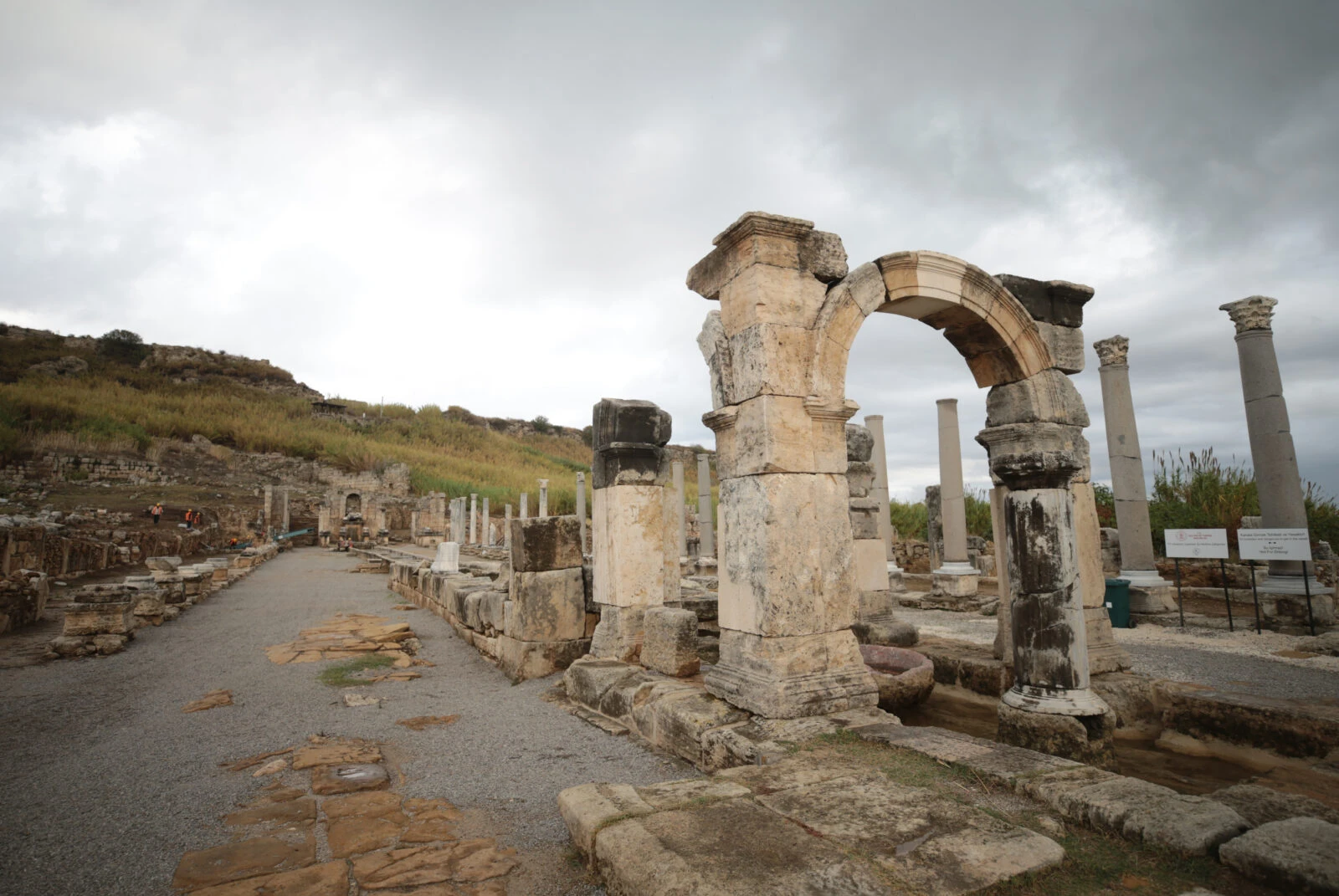Controversial road restoration sparks debate at Türkiye’s ancient city Perge
 A collage showing the Roman-era road at Perge Ancient City in Antalya, Türkiye – the old version (Top Left) and the restored version (Bottom Right). (Photos via Instagram/@umit_isin)
A collage showing the Roman-era road at Perge Ancient City in Antalya, Türkiye – the old version (Top Left) and the restored version (Bottom Right). (Photos via Instagram/@umit_isin)
A recent restoration project on the ancient colonnaded street of Perge, one of Türkiye’s most important Roman-era cities, has sparked a heated debate among archaeologists and heritage experts.
Located in Antalya, the Roman road in Perge ancient city—famed for showcasing the grandeur of the empire’s architecture—has undergone a restoration that some experts claim has stripped it of its historical character. Critics argue that centuries-old wheel tracks and surface features have been buried beneath new stonework and modern jointing techniques, leaving the historic path “artificial and devoid of authenticity.”
‘Artificial road with no historical value’
The focal point of the controversy is the new stone paving and mortar joints applied along the famed Roman-era boulevard. Archaeologists claim that the restoration has buried ancient wheel ruts and worn paths under new, non-original stones.
“This is no longer a genuine ancient road. They have buried thousands of years of history under modern materials. It has lost all historical authenticity,” said critics from the archaeological community.

Excavation leader defends restoration
Speaking to Salim Uzun from Hurriyet, Professor Sedef Cokay, head of the Perge Excavation Project, described the criticism as “unfair” and warned against what she called a “public lynching.”
“We did not act carelessly. The criticism is harsh and judgmental,” she said.
Addressing erosion and visitor safety
Explaining the reasons behind the restoration, Professor Cokay emphasized that the original stone blocks on the colonnaded street were suffering from structural issues.
“The walking path on the colonnaded street was unstable. The original stones had shifted due to rain, natural factors, and foot traffic from visitors. Some stones were even missing. We reinstalled the dislocated stones and replaced missing parts with new ones,” she said.
“Our goal was twofold: to prevent further displacement and to make the area safer for visitors. Walking on the old surface was extremely difficult.”
‘Stones returned to original positions’
Addressing concerns over the lost wheel tracks, Cokay explained that the original stones were carefully documented and returned to their precise locations.
“Some people are saying, ‘We can’t follow the wheel marks anymore,’ but the original stones were replaced exactly where they were taken from. The intervention followed all conservation principles,” she insisted.
‘Time will restore the feel of the old road’
Cokay also noted that while the current appearance of the road may feel unfamiliar to some, nature will help restore its character.
“People want to see the road as they remember it. Yes, the previous version evoked different emotions. But this new one will evolve too. In a year, grass and plants will grow between the stones, and the road will regain its old appearance.” The debate at Perge reflects a broader global tension between preservation and accessibility.



